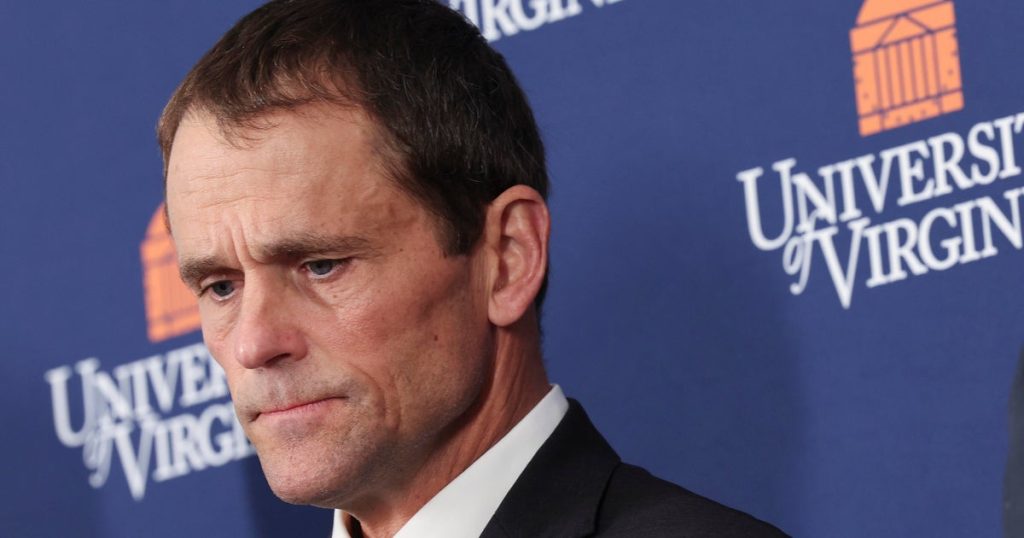The abrupt resignation of the University of Virginia’s president, James E. Ryan, is a key development stemming from the Trump administration’s crackdown on diversity, equity, and inclusion initiatives across U.S. universities. Amid fears of losing federal funding due to a federal investigation, Ryan’s departure marks a significant shift in the political landscape surrounding higher education. This move has sparked reactions from lawmakers, university staff, and students as the state approaches a pivotal gubernatorial election.
| Article Subheadings |
|---|
| 1) Background of the Resignation |
| 2) The Federal Pressure Campaign |
| 3) Implications for University Leadership |
| 4) Political Ramifications in Virginia |
| 5) The Future of Diversity Initiatives |
Background of the Resignation
The University of Virginia, founded in 1819 by Thomas Jefferson, has long been a cornerstone of higher education in the United States. James E. Ryan, who served as the university’s president, was known for his deep commitment to advancing diversity and inclusion across campus. His resignation on a recent Friday came amidst increased scrutiny and pressure from the Trump administration regarding the university’s diversity, equity, and inclusion (DEI) programs. The environment of uncertainty surrounding these initiatives prompted a critical decision on Ryan’s part, reflecting the tense state of higher education under the current administration.
The Federal Pressure Campaign
Sources with direct knowledge of the situation reported that the Department of Justice’s Civil Rights Division demanded drastic changes to the university’s DEI initiatives as part of a broader national campaign led by President Trump. The pressure on the University of Virginia marked a significant escalation in a series of efforts targeting public universities, just as previous federal scrutiny had mostly focused on elite private institutions. According to insiders, Ryan faced a stark choice: either comply with the demands to reshape the programs or risk severe repercussions, including the potential loss of federal funding essential for the university’s operations.
Implications for University Leadership
In his resignation letter to the university community, Ryan articulated the difficult position he found himself in. He stated, “I cannot make a unilateral decision to fight the federal government in order to save my own job.” This admission highlights the complex balance that leaders at academic institutions must navigate between institutional integrity and pressure from governmental authorities. His resignation is viewed by many as a loss for the university, particularly for its efforts to promote an inclusive environment for students and staff alike.
Political Ramifications in Virginia
As Ryan’s resignation unfolded, significant political dynamics came to the forefront. Lawmakers, including state senators, urged Ryan to remain in his position until after the gubernatorial election in November. The rationale is that a potential Democratic victory could alter the political landscape, potentially allowing for a challenge to Trump’s directives. Virginia’s current Republican governor, Glenn Youngkin, who has previously criticized DEI programs, has been a focal point for this ongoing tension. The outcome of the upcoming election might have critical implications for the leadership of the university and its strategic direction concerning DEI initiatives.
The Future of Diversity Initiatives
The trajectory of diversity, equity, and inclusion efforts at the University of Virginia, as well as at colleges nationwide, remains uncertain. Since the rise of scrutiny under the Trump administration, various institutions, including well-known ones such as Columbia University and the University of Michigan, have scaled back their messaging and programs related to DEI. This trend poses questions about the future of such initiatives across educational institutions, as they grapple with compliance, funding, and maintaining their core values. As stakeholders reflect on Ryan’s resignation, it serves as a critical reminder of the complexities and challenges that universities face in the current political climate.
| No. | Key Points |
|---|---|
| 1 | The resignation of President Ryan illustrates the impact of federal scrutiny on university governance. |
| 2 | The Trump administration’s efforts to reshape DEI programs have led to significant backlash and concern within higher education. |
| 3 | Ryan’s departure signals potential disruptions in university leadership amidst a politically charged atmosphere. |
| 4 | Political dynamics in Virginia could influence the future of DEI initiatives depending on the outcomes of upcoming elections. |
| 5 | The situation presents a pressing question for universities about maintaining DEI efforts under potential governmental pressure. |
Summary
The resignation of James E. Ryan as the president of the University of Virginia underscores the ongoing tensions between federal policies and higher education. As the political landscape continues to evolve in Virginia, the implications of such high-profile resignations raise critical questions about the future of university governance, diversity initiatives, and the fundamental mission of education. In a time when the effectiveness of diversity programs is under constant scrutiny, the decisions made by university leaders will resonate beyond academic walls, affecting the lives of countless students and faculty members.
Frequently Asked Questions
Question: What prompted President Ryan’s resignation?
President Ryan resigned due to pressures from the Trump administration regarding diversity, equity, and inclusion initiatives, amid fears of losing federal funding.
Question: How has the federal government influenced university policies?
The federal government has implemented a pressure campaign against universities, demanding changes to DEI programs, which has led to significant adaptations in several institutions across the nation.
Question: What are the implications of these changes for students and staff?
The changes might result in diminished diversity efforts, affecting students’ and staff’s experiences and opportunities at educational institutions, particularly in areas related to support and inclusiveness.


